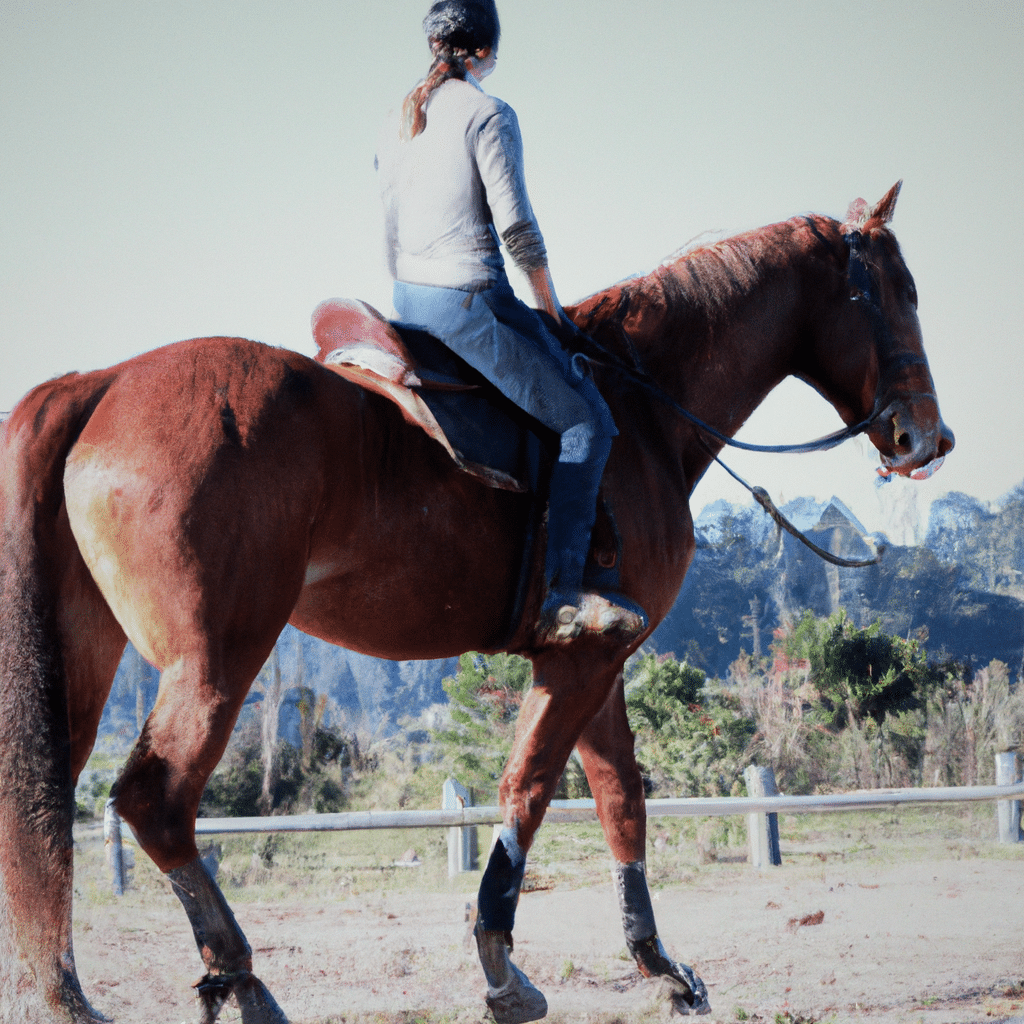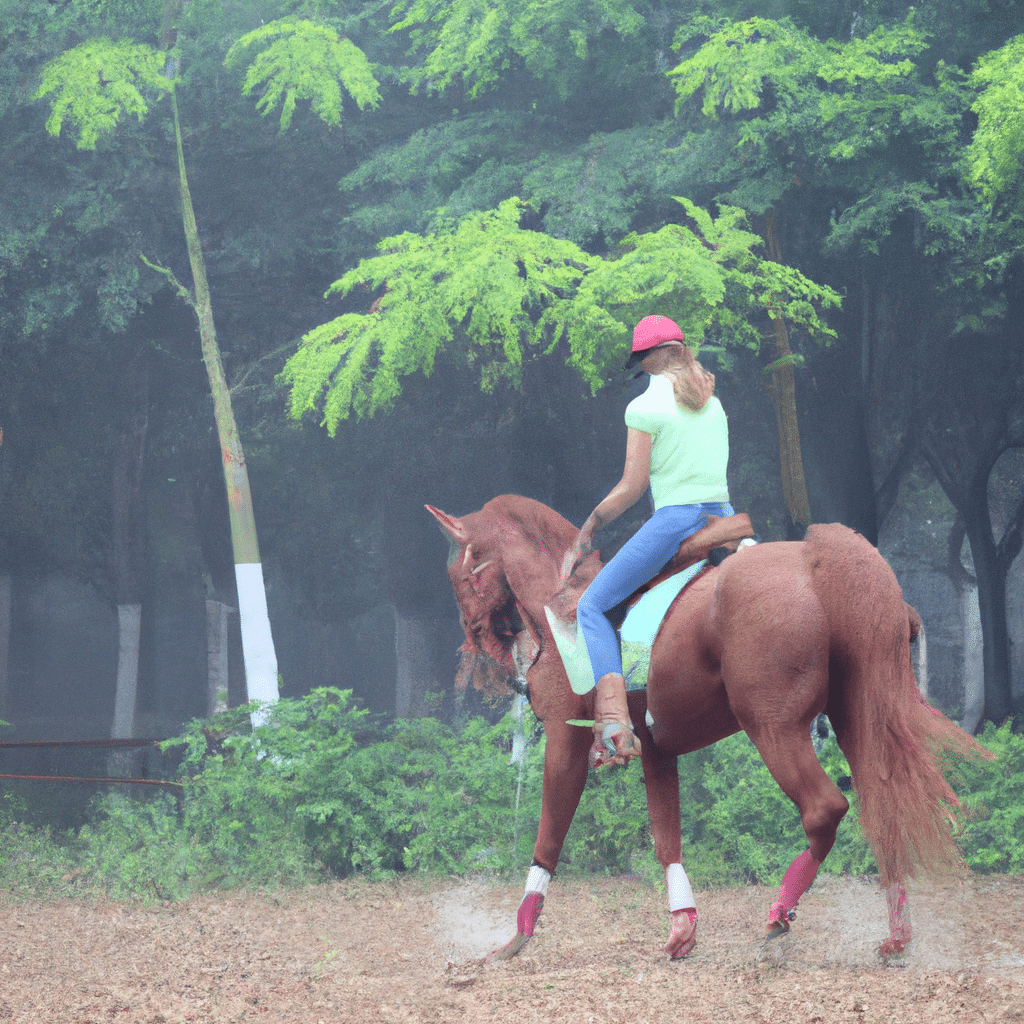Are you a horse enthusiast looking to take your riding skills to the next level? Do you dream of exploring the great outdoors on horseback, feeling the wind in your hair and the thrill of adventure? If so, then mastering the art of western riding and trail riding is the perfect way to fulfill your equestrian aspirations.
Western riding is a style of horseback riding that originated in the American West. It is known for its distinctive equipment, such as the Western saddle and bridle, as well as its unique techniques and traditions. Trail riding, on the other hand, involves riding horses on designated trails, allowing riders to experience the beauty of nature while enjoying the company of their equine companions.
In this comprehensive guide, we will delve into the world of western riding and provide you with valuable trail riding tips. Whether you are a beginner or an experienced rider, there is always something new to learn and discover. So saddle up, grab your reins, and let’s embark on this exciting equestrian journey together!
The Basics of Western Riding
Before we dive into the world of trail riding, it’s important to have a solid understanding of the basics of western riding. Western riding is characterized by its relaxed and comfortable style, which allows riders to spend long hours in the saddle without feeling fatigued. One of the key elements of western riding is the use of a Western saddle, which provides greater stability and support compared to other types of saddles. The saddle features a horn at the front, which can be used for various purposes, such as securing ropes or hanging equipment.
Western riding also involves the use of a specific type of bridle, known as a Western bridle. This bridle typically includes a curb bit, which provides more direct communication between the rider and the horse. The reins are held in one hand, allowing the rider to have a free hand for other tasks, such as opening gates or carrying equipment.
In addition to the equipment, western riding has its own set of techniques and cues. One of the most important cues is the neck rein, where the rider uses a light touch of the rein against the horse’s neck to guide them in the desired direction. This allows for subtle and precise communication between horse and rider.
Now that we have covered the basics of western riding, let’s move on to the exciting world of trail riding and explore some essential tips to enhance your experience.
Choosing the Right Trail
When it comes to trail riding, choosing the right trail is crucial for a safe and enjoyable experience. Before setting out on your adventure, take some time to research and select a trail that suits your skill level and the abilities of your horse.
Consider factors such as the terrain, distance, and elevation of the trail. If you are a beginner or have a less experienced horse, opt for a trail that is relatively flat and well-maintained. This will allow you to focus on enjoying the ride without worrying about navigating challenging obstacles.
On the other hand, if you are an experienced rider looking for a more thrilling experience, you may choose a trail with varied terrain and elevation. This will provide you with opportunities to test your skills and enjoy the adrenaline rush of riding through diverse landscapes.
Additionally, consider the trail’s accessibility and facilities. Look for trails that have ample parking space, restrooms, and water sources for both you and your horse. It’s also a good idea to check if there are any specific rules or permits required for riding on the trail.
Remember, the right trail can make all the difference in your trail riding experience. So choose wisely and embark on an adventure that matches your riding goals and preferences.

Preparing Yourself and Your Horse
Trail riding requires adequate preparation to ensure the safety and well-being of both you and your horse. Here are some essential tips to help you get ready for your adventure:
1. Fitness: Before hitting the trails, make sure both you and your horse are in good physical condition. Engage in regular exercise and conditioning programs to build stamina and strength. This will help you endure long rides and navigate challenging terrains with ease.
2. Tack and Equipment: Check your tack and equipment to ensure they are in good working condition. Inspect your saddle, bridle, and reins for any signs of wear and tear. Make sure your horse’s hooves are properly trimmed and shod to provide optimal traction on the trail.
3. Trail Essentials: Pack essential items such as a first aid kit, a map or GPS device, a cell phone, and plenty of water and snacks. Dress appropriately for the weather and consider wearing a helmet for added safety. Don’t forget to bring a halter and lead rope in case you need to tie up your horse during breaks.
4. Horse Health: Prior to the ride, ensure that your horse is up to date on vaccinations and deworming. Check for any signs of lameness or discomfort and address them before embarking on a long ride. It’s also a good idea to carry a copy of your horse’s health records in case of emergencies.
Once you have taken care of the necessary preparations, it’s time to hit the trail and enjoy the beauty of nature on horseback!
Riding Techniques for Trail Riding
Trail riding requires a slightly different set of riding techniques compared to riding in an arena or a controlled environment. Here are some tips to help you navigate the trails with confidence:
1. Balance and Posture: Maintain a balanced and relaxed posture in the saddle. Keep your weight centered and distribute it evenly on both stirrups. This will help you stay stable and in control, especially when riding on uneven terrain.
2. Eyes Up and Ahead: Look ahead and scan the trail for any potential obstacles or hazards. By keeping your eyes up, you can anticipate any challenges and make timely adjustments to your riding. This will also allow you to fully appreciate the scenic views along the trail.
3. Use Your Legs: Your legs play a crucial role in communicating with your horse during trail riding. Use light leg cues to ask your horse to move forward, slow down, or change direction. Practice using your legs independently to guide your horse through tight turns or obstacles.
4. Maintain a Safe Distance: When riding in a group, maintain a safe distance between horses to prevent any accidents or collisions. Keep a respectful distance from the horse in front of you and avoid riding too closely. This will give both you and your horse enough space to maneuver and react to any unexpected situations.
By mastering these riding techniques, you will be able to navigate the trails with confidence and enjoy a smooth and enjoyable trail riding experience.
Safety Tips for Trail Riding
When it comes to trail riding, safety should always be a top priority. Here are some important safety tips to keep in mind before, during, and after your ride:
1. Plan Ahead: Before heading out on the trail, inform someone about your riding plans. Share your intended route, estimated time of return, and any emergency contact numbers. This will ensure that someone is aware of your whereabouts in case of any unforeseen circumstances.
2. Ride with a Buddy: It’s always safer to ride with a companion, especially when exploring unfamiliar trails. Riding with a buddy provides an extra layer of security and support in case of emergencies or accidents. Plus, it’s more fun to share the experience with a fellow horse enthusiast!
3. Stay Alert: Pay attention to your surroundings and stay alert throughout the ride. Be aware of any changes in the trail conditions, such as fallen branches or slippery spots. Keep an eye out for wildlife or other potential hazards that may startle your horse. By staying alert, you can react quickly and prevent accidents.
4. Pace Yourself: Trail riding is not a race. Take your time and ride at a comfortable pace for both you and your horse. Avoid pushing yourself or your horse beyond your limits. Take breaks when needed and allow your horse to rest and graze. This will help prevent fatigue and ensure a more enjoyable ride.
5. Respect Nature and Wildlife: When riding on trails, remember that you are a guest in nature. Respect the environment by staying on designated trails and avoiding sensitive areas. Keep a safe distance from wildlife and do not disturb their natural habitat. Leave no trace behind and dispose of any trash properly.
By following these safety tips, you can minimize the risks associated with trail riding and have a safe and memorable experience.
Building a Strong Partnership with Your Horse
Trail riding is not only about exploring the outdoors; it’s also an opportunity to build a strong partnership with your horse. Here are some tips to strengthen your bond and enhance your communication with your equine companion:
1. Trust and Respect: Trust is the foundation of any successful partnership. Build trust with your horse through consistent and fair training methods. Treat your horse with respect and kindness, and they will respond positively to your cues and commands.
2. Clear Communication: Develop clear and effective communication with your horse. Use consistent cues and signals to convey your intentions. Practice different exercises and maneuvers to improve your horse’s responsiveness and obedience. The better you communicate, the smoother your trail rides will be.
3. Positive Reinforcement: Reward your horse for good behavior and correct responses. Positive reinforcement, such as praise or a gentle pat, can go a long way in reinforcing desired behaviors. This will motivate your horse and strengthen the bond between you.
4. Regular Training: Consistency is key when it comes to training. Set aside regular time for training sessions to reinforce your horse’s skills and maintain their responsiveness. Practice different trail obstacles and scenarios to prepare your horse for various situations you may encounter on the trail.
5. Enjoy the Journey: Remember to enjoy the journey and have fun with your horse. Trail riding is not just about reaching a destination; it’s about the bond you develop and the experiences you share along the way. Take the time to appreciate the beauty of nature and the joy of riding with your equine partner.
By focusing on building a strong partnership with your horse, you can create a harmonious and enjoyable trail riding experience for both of you.
In conclusion, mastering the art of western riding and trail riding is a rewarding endeavor for horse enthusiasts. It allows you to connect with nature, explore new landscapes, and build a strong bond with your horse. By following the tips and techniques outlined in this guide, you can enhance your riding skills, ensure your safety, and make the most of your trail riding adventures.
Remember to start with the basics of western riding, familiarize yourself with the equipment and techniques, and choose the right trail that suits your skill level and preferences. Prepare yourself and your horse adequately, focusing on fitness, proper tack and equipment, and essential trail essentials. Develop the necessary riding techniques for trail riding, such as maintaining balance and posture, using your legs effectively, and maintaining a safe distance when riding in a group.
Safety should always be a priority when trail riding. Plan ahead, ride with a buddy, stay alert, pace yourself, and respect nature and wildlife. These safety measures will ensure a smooth and enjoyable ride while minimizing risks. Lastly, focus on building a strong partnership with your horse through trust, clear communication, positive reinforcement, regular training, and most importantly, enjoying the journey together.
So, are you ready to embark on your trail riding adventure? Are you prepared to experience the thrill of exploring the great outdoors on horseback? Remember, the world of western riding and trail riding is waiting for you to master its art and create unforgettable memories with your equine companion. Saddle up, embrace the beauty of nature, and let the trail lead you to new horizons!
Are you ready to embrace the beauty of nature, build a strong bond with your horse, and embark on an unforgettable trail riding adventure?

After a long day of trail riding, it’s important to provide your horse with a comfortable and relaxing space to rest. Consider creating a cozy lounge area in your barn where your horse can unwind and rejuvenate. Use soft bedding, provide ample space for movement, and add some enriching elements like toys or scratching posts. A cozy lounge area will not only benefit your horse’s physical well-being but also contribute to their mental relaxation.

Obesity in horses is a growing concern, as it can lead to various health issues, including laminitis. Unraveling the connection between obesity and laminitis is crucial for horse owners to understand the risks and take preventive measures. Proper diet management, regular exercise, and monitoring body condition score are essential in maintaining a healthy weight and reducing the risk of laminitis.

Show jumping is a thrilling equestrian sport that showcases the agility and athleticism of horses. Many horse charities are dedicated to promoting and supporting show jumping, providing opportunities for riders and horses to compete at various levels. These charities often organize events, offer training programs, and contribute to the welfare of show jumping horses. Discover the world of show jumping horse charities and learn how you can get involved in this exciting sport while making a positive impact.

